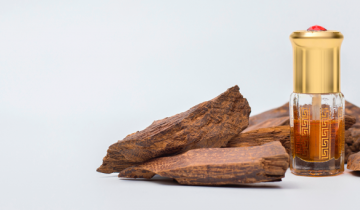Table of Contents
- Introduction: Discover the Secret of Smell in Spanish
- The Essence of Spanish Aromas
- Exploring Spanish Vocabulary of Scents
- Smells in the Spanish Gastronomy
- Spanish Scents in Literature
- Language: A Bridge to Other Cultures
Introduction: Discover the Secret of Smell in Spanish
As one of Europe’s most vibrant countries Spain boasts diverse landscapes ranging from mountains capes down to sunny beaches – all embedded within a rich cultural history spanning centuries. But beyond those well documented wonders lies another treasure – intricate aromas woven into every aspect of the language spoken here.
This blog post intends to discover those secrets by delving into the vocabulary of scent in Spanish. We will journey through the country’s olfactory culture learning how these scents play a vital role not only in gastronomy but also in literature. Prepare to be immersed in an unparalleled linguistic and sensory experience as we unlock the hidden meanings behind Spanish smells.
The Essence of Spanish Aromas
In Spain, aromatic experiences extend beyond mere smells. They encapsulate a complex amalgamation of memories, encounters and cultural influences. The briny air by the coastline to the aromatic fields of lavender in La Mancha and the robust scent of freshly harvested olive oil represent a multitude of sensory elements that add depth to Spanish culture.
Exploring Spanish Vocabulary of Scents
When it comes to describing smell in Spanish, the language offers a rich vocabulary, allowing speakers to express various nuances. Consider, for instance, the distinction between “olor” and “aroma.” While both refer to smell, “olor” is more general, while “aroma” is usually positive, suggesting a pleasing or appetizing smell.
The Diverse Scent Descriptors
Beyond these basic words, Spanish offers a plethora of specific terms to describe a wide range of scents. “Hediondo” refers to a foul or unpleasant smell, while “fragante” describes a pleasant, sweet smell, often related to flowers or perfumes. The scent of rain-soaked earth, a smell so specific yet universally familiar, is encapsulated in the word “petrichor.”
The Connection to Emotions
Notably, Spanish smell vocabulary often links scents to emotions and experiences. “Nostalgia,” for example, may be invoked by “olor a tierra mojada” (the smell of wet earth), reminding one of home or childhood.
Smells in the Spanish Gastronomy
The world of Spanish gastronomy offers a host of unique smells, each with its own vocabulary. The “aroma de ajo y perejil” (the smell of garlic and parsley) is a staple of Spanish kitchens, while the “olor de paella en la playa” (the smell of paella on the beach) evokes images of seaside meals.
The Role of Wine Aromas
The wine industry is another domain where the vocabulary of smell in Spanish shines. Terms like “afrutado” (fruity), “amaderado” (woody), and “ahumado” (smoky) are commonly used to describe the complex bouquet of Spanish wines.
Spanish Scents in Literature
The rich vocabulary of smell in Spanish is vividly present in its literature. From the “olor a libros viejos” (smell of old books) in a library described by many authors, to the “aroma de azahar” (scent of orange blossoms) in Gabriel Garcia Marquez’s works, the sense of smell is often employed to create evocative imagery and stir emotions.
Miguel de Cervantes and Don Quixote
A famous example comes from Cervantes’ “Don Quixote,” where the smell of parchment and ink communicates the world of knights and chivalry, stimulating the protagonist’s imagination and madness. The phrases like “olor a pergamino y tinta” (the smell of parchment and ink) not only denote the physical smell but also carry symbolic significance.
Federico García Lorca and The Fragrance of Andalusia
Similarly, the works of Federico García Lorca, a poet and playwright, are imbued with the scents of his native Andalusia. He uses phrases such as “olor a limón y canela” (the smell of lemon and cinnamon) to create a sensory panorama of the region.
Language: A Bridge to Other Cultures
Language provides us with more than just words; it allows us to experience different cultures on emotional levels that go beyond mere words. Exploring the vocabulary related to smells in Spanish offers an exceptional way to connect with the country’s culture better. Each term encapsulates a unique emotional memory tied deeply within Spanish culture. From the pungent smell of Spanish cheeses to the fresh scent of Mediterranean Sea shores: each term represents an integral piece of Spain’s vibrant mosaic-like lifestyle.
To truly understand another culture requires engagement with all aspects through one’s senses – especially our sense of smell. Learning about Spain’s rich vocabulary related to smells allows us uniquely to absorb their scents from various regions while experiencing authentic cuisine and witnessing picturesque landscapes outlined within literature in new ways.
The Spanish language captivates due to its well-known colorful descriptive scent descriptors that reflect aspects of the country’s people, soul, history and traditions. Language serves as more than merely communication: it opens doors towards understanding and experiencing other cultures intimately.
Whether you’re visiting Spain for vacation or are studying its language, take time out for yourself by breathing deeply- this act could potentially unlock unforgettable olfactory journeys into Spain’s cultural heritage waiting for you!



 No products in the cart.
No products in the cart.